 Antiquarium Arborense - Museo archeologico Giuseppe Pau Oristano
Antiquarium Arborense - Museo archeologico Giuseppe Pau Oristano
Skip over navigation bar and go to contents

Contents
The Antiquarium Arborense
The Antiquarium Arborense is the only museum in Sardinia with a section for blind and visually impaired people, including the most beautiful pieces from the museum and the reproduction of valuable artefacts from Oristano’s cultural heritage. The artefacts, made of different materials (ceramic, plaster, bronze, wood and marble), are chronologically ordered and information is available in large print, audio and Braille formats.
PUBLIC NOTICE:
The museum Antiquarium Arborense is closed for renovation works.
We apologize for the inconvenience
Highlights
Temporary exhibition "The bronze people"
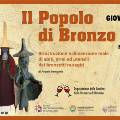 17/06/2022
During the summer, the Museum Antiquarium Arborense will host the exhibition "The bronze people": ten full size mannequins with the reconstruction of Nuragic weapons, clothes, accessories and utensils made with the same ancient materials and techniques...
17/06/2022
During the summer, the Museum Antiquarium Arborense will host the exhibition "The bronze people": ten full size mannequins with the reconstruction of Nuragic weapons, clothes, accessories and utensils made with the same ancient materials and techniques...
The merchant ships
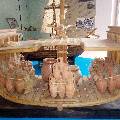 17/07/2021
Thanks to a miniature model of a Roman ship made by the Sardinia Romana Association looking at experimental archaeology, we will talk about the merchant ships that carried goods from port to port in the Mediterranean Sea: intense trades and a wide range of routes guaranteed the transport of food, amphorae, metals and pottery in every region of the Roman Empire...
17/07/2021
Thanks to a miniature model of a Roman ship made by the Sardinia Romana Association looking at experimental archaeology, we will talk about the merchant ships that carried goods from port to port in the Mediterranean Sea: intense trades and a wide range of routes guaranteed the transport of food, amphorae, metals and pottery in every region of the Roman Empire...
The Montefortino bronze helmet and the panoply of a Roman legionary
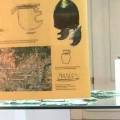 23/05/2021
Today we talk about the Montefortino bronze helmet, one of the most important finds in the Antiquarium Arborense, and the panoply of a Roman legionary in the battle of Cornus, reconstructed by the Sardinia Romana Association...
23/05/2021
Today we talk about the Montefortino bronze helmet, one of the most important finds in the Antiquarium Arborense, and the panoply of a Roman legionary in the battle of Cornus, reconstructed by the Sardinia Romana Association...
A formidable warship: the trireme
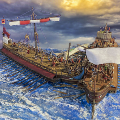 23/05/2021
Thanks to a miniature model of a Roman trireme built by the Association Sardinia Romana according to the canons of experimental archaeology, we will tell you about one of the most important warships that sailed the Mediterranean Sea around the 3rd century BC. Light and fast, the trireme had an exceptional agility in manoeuvres and a high propulsive power...
23/05/2021
Thanks to a miniature model of a Roman trireme built by the Association Sardinia Romana according to the canons of experimental archaeology, we will tell you about one of the most important warships that sailed the Mediterranean Sea around the 3rd century BC. Light and fast, the trireme had an exceptional agility in manoeuvres and a high propulsive power...
The Sartiglia in honour of the royal wedding between Vittorio Emanuele of Savoy and Maria Adelaide of Austria
 19/04/2021
In this video, we will talk about a special edition of Sartiglia, in honour of the royal wedding between Vittorio Emanuele Duke of Savoy and the Archduchess Maria Adelaide of Austria. The celebrations lasted for 24 days in Turin and the city council paid out 200,000 lire (the equivalent of 1,100,000 euro), of which 15,000 lire was for charity...
19/04/2021
In this video, we will talk about a special edition of Sartiglia, in honour of the royal wedding between Vittorio Emanuele Duke of Savoy and the Archduchess Maria Adelaide of Austria. The celebrations lasted for 24 days in Turin and the city council paid out 200,000 lire (the equivalent of 1,100,000 euro), of which 15,000 lire was for charity...
The Sartiglia in honour of Charles Emmanuel of Savoy
 09/04/2021
Today we will talk about two special editions of Sartiglia in honour of Charles Emmanuel of Savoy: in 1722 when he married Anne Christine of Sulzbach, and in 1724 when he married Polyxena of Hesse...
09/04/2021
Today we will talk about two special editions of Sartiglia in honour of Charles Emmanuel of Savoy: in 1722 when he married Anne Christine of Sulzbach, and in 1724 when he married Polyxena of Hesse...
The Sartiglia in honour of the royal wedding between Philip V and Maria Luisa of Savoy
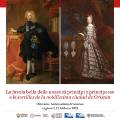 29/03/2021
In this video, we will talk about a special edition of Sartiglia in honour of the royal wedding between Philip V and Maria Luisa of Savoy, a marriage born as a pledge of the alliance between Louis XIV of France (the Sun King) and Victor Amadeus II of Savoy...
29/03/2021
In this video, we will talk about a special edition of Sartiglia in honour of the royal wedding between Philip V and Maria Luisa of Savoy, a marriage born as a pledge of the alliance between Louis XIV of France (the Sun King) and Victor Amadeus II of Savoy...
The Sartiglia in honour of Charles V in 1547
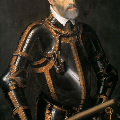 23/03/2021
Thanks to some precious documents kept in the Historical Archives, in this video we will talk about the first Sartiglia attested in Oristano, probably on the occasion of the victory of Charles V of Habsburg, King of Spain and Emperor of the Holy Roman Empire, at the battle of Mühlberg on 24th April 1547 against the league of protestant princes...
23/03/2021
Thanks to some precious documents kept in the Historical Archives, in this video we will talk about the first Sartiglia attested in Oristano, probably on the occasion of the victory of Charles V of Habsburg, King of Spain and Emperor of the Holy Roman Empire, at the battle of Mühlberg on 24th April 1547 against the league of protestant princes...
The Sartiglia in honour of Saint Archelaus
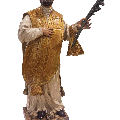 17/03/2021
Thanks to some precious documents kept in the Historical Archives of Oristano, in this video we will talk about some special editions of Sartiglia, the famous medieval equestrian tournament that has been running for several centuries in Oristano for Carnival. Today we will talk about Sartiglia in honour of Saint Archelaus, the patron saint of Oristano city, which probably took place in 1616...
17/03/2021
Thanks to some precious documents kept in the Historical Archives of Oristano, in this video we will talk about some special editions of Sartiglia, the famous medieval equestrian tournament that has been running for several centuries in Oristano for Carnival. Today we will talk about Sartiglia in honour of Saint Archelaus, the patron saint of Oristano city, which probably took place in 1616...
The story of Saint Blaise
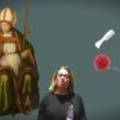 26/02/2021
Today we talk about the last martyr saint that we find in the retablo of the Holy Christ, on display at the Antiquarium Arborense. It is Saint Blaise, who died around the year 316 in Sebaste, Armenia...
26/02/2021
Today we talk about the last martyr saint that we find in the retablo of the Holy Christ, on display at the Antiquarium Arborense. It is Saint Blaise, who died around the year 316 in Sebaste, Armenia...
The protomartyrs of Morocco
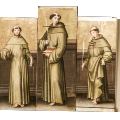 09/02/2021
Today we talk about the proto-martyrs represented in the retablo of the Holy Christ, on display at the Antiquarium Arborense. Beràrd, Otho, Peter, Accursius and Adjutus were the first missionaries sent by Francis to Morocco to promote Christianity. They were expelled twice, but they returned each time and continued to preach until...
09/02/2021
Today we talk about the proto-martyrs represented in the retablo of the Holy Christ, on display at the Antiquarium Arborense. Beràrd, Otho, Peter, Accursius and Adjutus were the first missionaries sent by Francis to Morocco to promote Christianity. They were expelled twice, but they returned each time and continued to preach until...
The story of Saint Stephen
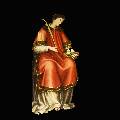 31/01/2021
Today we talk about another martyr saint represented in the retablo of the Holy Christ: Saint Stephen, the first martyr of Christian history. He was one of the first seven deacons chosen by the early Christian community to assist the Apostles in their mission...
31/01/2021
Today we talk about another martyr saint represented in the retablo of the Holy Christ: Saint Stephen, the first martyr of Christian history. He was one of the first seven deacons chosen by the early Christian community to assist the Apostles in their mission...
The story of Saint Catherine
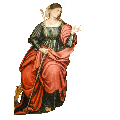 22/01/2021
Today the protagonist is Saint Catherine, a young woman of noble birth, who was condemned to death by the emperor Maxentius and was martyred around 305 A.D. in Alexandria of Egypt...
22/01/2021
Today the protagonist is Saint Catherine, a young woman of noble birth, who was condemned to death by the emperor Maxentius and was martyred around 305 A.D. in Alexandria of Egypt...
The story of Saint Apollonia
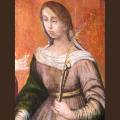 18/01/2021
Torture wheels, pincers, saws, swords...oh, don't be surprised...Today we talk about martyr saints! The protagonist is Saint Apollonia of Alexandria, who was martyred in 249 A.D. She is the patron saint of dental diseases as well as dentists...
18/01/2021
Torture wheels, pincers, saws, swords...oh, don't be surprised...Today we talk about martyr saints! The protagonist is Saint Apollonia of Alexandria, who was martyred in 249 A.D. She is the patron saint of dental diseases as well as dentists...
Collection highlights: the God Thot
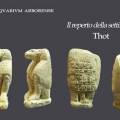 31/05/2020
The Antiquarium Arborense houses a Phoenician amulet (7th-6th century B.C.) which represents an itiphallic baboon crouching on a flat base. The find comes from the archaeological excavations of Su Murru Mannu in the tophet area of Tharros...
31/05/2020
The Antiquarium Arborense houses a Phoenician amulet (7th-6th century B.C.) which represents an itiphallic baboon crouching on a flat base. The find comes from the archaeological excavations of Su Murru Mannu in the tophet area of Tharros...
Collection highlights: statue of god Silvanus
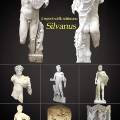 23/05/2020
The Antiquarium Arborense houses a marble statue of god Silvanus, which dates back to the 2nd century AD, from Tharros. It is supposed to be a statue of Genius. Raimondo Zucca has proposed the attribution of this statue to Silvanus, a god with human face, but sometimes it was depicted with goat's paws, hooves and horns on his forehead...
23/05/2020
The Antiquarium Arborense houses a marble statue of god Silvanus, which dates back to the 2nd century AD, from Tharros. It is supposed to be a statue of Genius. Raimondo Zucca has proposed the attribution of this statue to Silvanus, a god with human face, but sometimes it was depicted with goat's paws, hooves and horns on his forehead...
Collection highlights: cup with handle
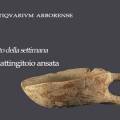 16/05/2020
This cup with handle belongs to the Pischedda Collection, the main collection of the Antiquarium Arborense. It dates back to the Final - Middle Neolithic or Late Neolithic period and it was found in the Sinis Peninsula...
16/05/2020
This cup with handle belongs to the Pischedda Collection, the main collection of the Antiquarium Arborense. It dates back to the Final - Middle Neolithic or Late Neolithic period and it was found in the Sinis Peninsula...
Collection highlights: bronze helmet from Cornus
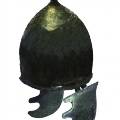 10/05/2020
The archaeological collection Felice Cherchi Paba includes fragments of two bronze helmets from the area between San Vero Milis and Riola Sardo, in the Sinis peninsula. The most important fragments refer to an Etruscan Italic helmet called Montefortino, corresponding to the type A of H. Robinson and the type D of F. Coarelli...
10/05/2020
The archaeological collection Felice Cherchi Paba includes fragments of two bronze helmets from the area between San Vero Milis and Riola Sardo, in the Sinis peninsula. The most important fragments refer to an Etruscan Italic helmet called Montefortino, corresponding to the type A of H. Robinson and the type D of F. Coarelli...
Collection highlights: the Nuragic quiver
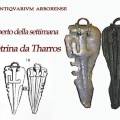 02/05/2020
The term ‘quivers’ is used to describe triangular plate pendants with two eyelets, a miniature reproduction of a leather dagger sheath with pins (from one to four) on one side and two types of dagger on the other side, typical of Nuragic weaponry...
02/05/2020
The term ‘quivers’ is used to describe triangular plate pendants with two eyelets, a miniature reproduction of a leather dagger sheath with pins (from one to four) on one side and two types of dagger on the other side, typical of Nuragic weaponry...
Collection highlights: the Philistine sarcophagus
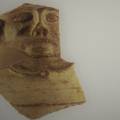 24/04/2020
The story of our Philistine sarcophagus starts in the area of the northwestern necropolis of Neapolis (the current S. Maria de Nabui (Guspini – South Sardinia), when archaeologists found two matching fragments of a ceramic vase with anthropomorphic face...
24/04/2020
The story of our Philistine sarcophagus starts in the area of the northwestern necropolis of Neapolis (the current S. Maria de Nabui (Guspini – South Sardinia), when archaeologists found two matching fragments of a ceramic vase with anthropomorphic face...
Saver ticket for the best attractions of Oristano
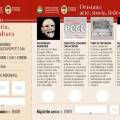 22/06/2018
Visiting Oristano for a day or more? Buy our saver ticket which gives you entry to the most important attractions of the city: Museum Antiquarium Arborense, Pinacoteca Comunale "Carlo Contini", Tower of Portixedda and Museo Diocesano...
22/06/2018
Visiting Oristano for a day or more? Buy our saver ticket which gives you entry to the most important attractions of the city: Museum Antiquarium Arborense, Pinacoteca Comunale "Carlo Contini", Tower of Portixedda and Museo Diocesano...
"Carlo Alberto archaeologist in Sardinia. The false Sardinian-Phoenician idols"
Services
Guided tour in the historical centre of Oristano

It is a yourney in the world of history, culture and traditions of Oristano: churches and monuments that date back to the age of the Giudicati and Spanish dominion, and also two perfectly preserved Medieval towers
Guided tour in the Medieval Tower of Mariano II

The Tower of Mariano II, built in 1290, was the north entrance to the city of Oristano: it is also called Porta Manna, Porta Pontis and Tower of Saint Christopher
Guided tour in the Medieval Tower of Portixedda

The original tower was built in the 13th century, but the present round tower dates back to the period of the Spanish domination of the island
Tactile museum
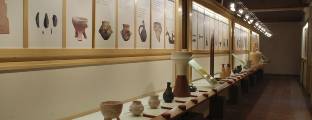
The tactile museum was inaugurated in 2009. In this section, blind and visually impaired people can touch the most beautiful manufactures of the museum and the reproductions of valuable artefacts of Oristano’s cultural heritage
Miniature models: Tharros in the 4th century and Oristano capital of the Giudicato d'Arborea

After the abandonment of Tharros (1070), the city of Oristano became the capital of the Giudicato of Arborea (11th century-1410). The people of Tharros, sick of continuous menaces and incursions of Saracen pirates, decided to move towards the interior, in a safer place: so they arrived in Oristano, inhabited since the Byzantine age
Piazza Corrias, 09170 Oristano | Tel: 0783 791262 | info@antiquariumarborense.it ConsulMedia 2012











